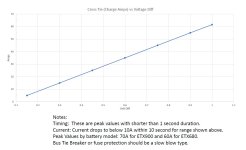Hi, I intend to install 2x EarthX ETX-900 batteries in my RV-10, and want to have separate contractors to allow the electrical system to be fed by Batt 1, Batt 2, or Both. When selecting Both, Battery 1 and Battery 2 will be effectively operating in parallel.
EarthX notes that 'When connecting two batteries, it is important to make sure the charge levels are similar (voltages are within 0.3 volt) before connection. If there is a large difference in charge level, high current can flow between the batteries.'
Any idea how to ensure that this is complied with?
EarthX notes that 'When connecting two batteries, it is important to make sure the charge levels are similar (voltages are within 0.3 volt) before connection. If there is a large difference in charge level, high current can flow between the batteries.'
Any idea how to ensure that this is complied with?





